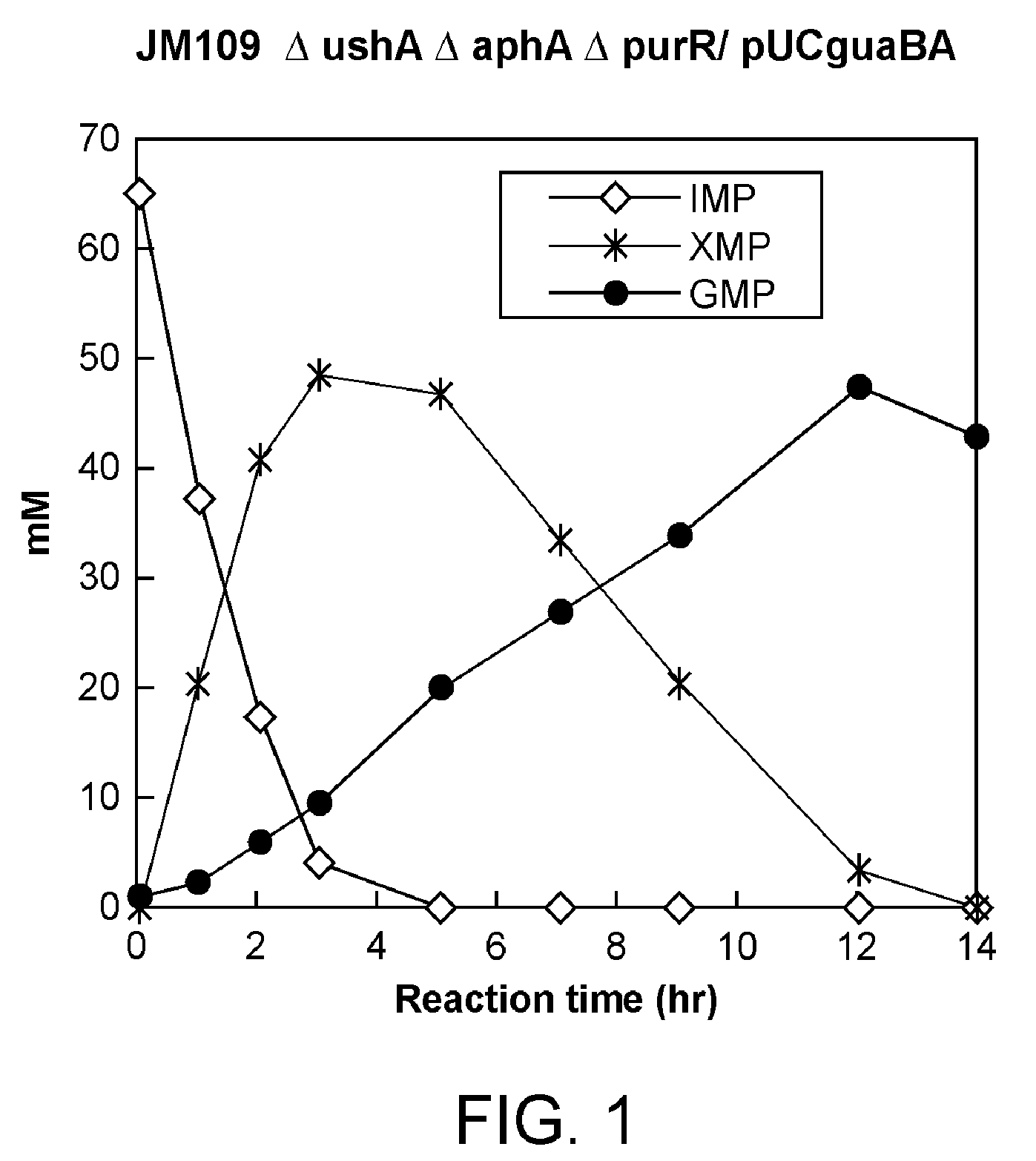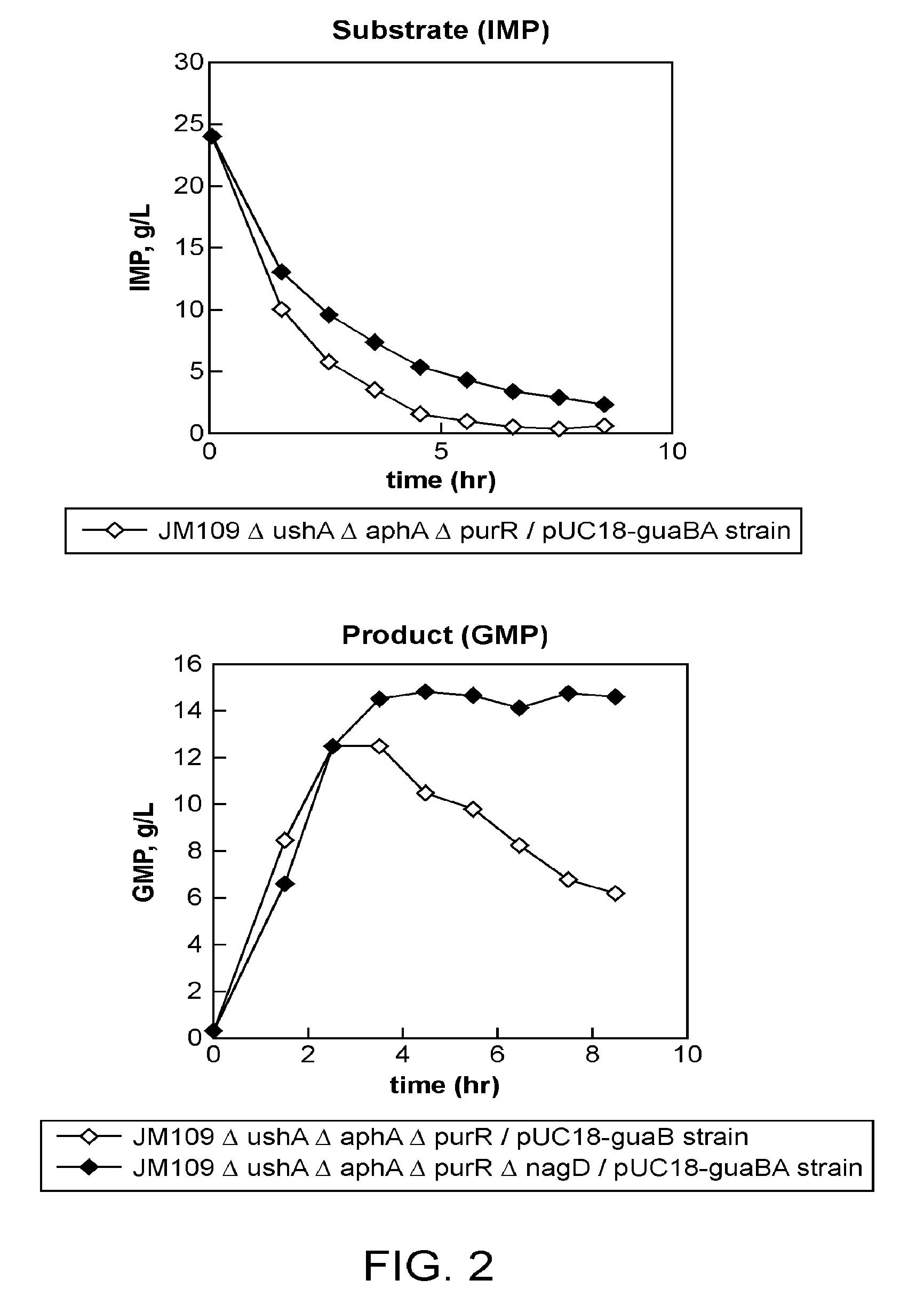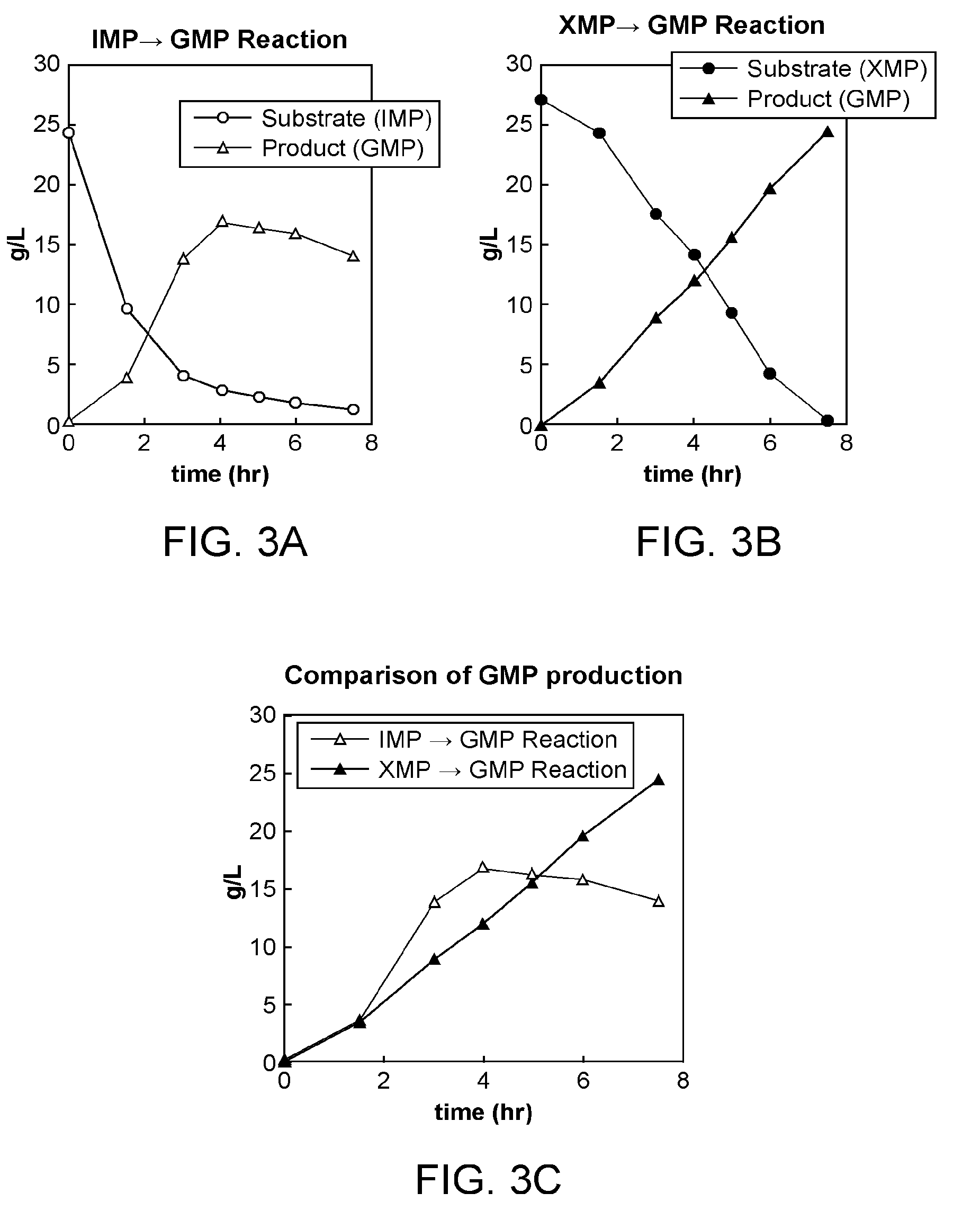Process for production of 5′-guanylic acid
a technology of guanylic acid and guanylic acid, which is applied in the direction of biochemistry apparatus and processes, microorganisms, enzymes, etc., can solve the problems of inability to achieve practicality and insufficient yield of direct fermentation of gmp, and achieve high efficiency
- Summary
- Abstract
- Description
- Claims
- Application Information
AI Technical Summary
Benefits of technology
Problems solved by technology
Method used
Image
Examples
example 1
Construction of a JM109 Strain Where 5′-nucleotidase Encoding ushA and aphA Genes are Deleted
[0126]The Escherichia coli JM109 strain, which is commonly used as a host for DNA cloning, was used to construct a strain which does not produce 5′-nucleotidase. 5′-nucleotidase is encoded by the ushA gene (Genbank Accession X03895 SEQ ID NO: 21) and aphA gene (Genbank Accession X86971 SEQ ID NO: 23).
[0127]Deletion of the ushA and aphA genes encoding 5′-nucleotidase was carried out by a method called “Red-driven integration” which was originally developed by Datsenko and Wanner (Proc. Natl. Acad. Sci. USA, 2000, vol. 97, No. 12, p 6640-6645) and an excision system derived from λ phage (J. Bacteriol. 2002 September; 184(18): 5200-3. Interactions between integrase and excisionase in the phage lambda excisive nucleoprotein complex. Cho E H, Gumport R I, Gardner J F.). According to the “Red-driven integration” method, a gene-disrupted strain can be constructed in one step by using a PCR product...
example 2
Construction of a nagD Gene Disrupted Strain from the JM109ΔushAΔaphAΔpurR Strain
[0161]Using the JM109ΔushAΔaphAΔpurR strain, which was obtained in Example 1 as a parent strain, a strain which does not produce NagD was constructed. NagD is encoded by the nagD gene (Genbank Accession X14135, SEQ ID NO: 41). The nagD gene was disrupted according to the above-described method of disruption of ushA, aphA and purR genes and using primers of SEQ ID NOs: 43 and 44 for nagD disruption. Thereby, JM109ΔushAΔaphAΔpurRΔnagD was obtained.
Introduction of the Plasmid pUC18-guaBA for Expression of IMP dehydrogenase and GMP Synthetase into the JM109ΔushAΔaphAΔpurR and JM109ΔushAΔaphAΔpurRΔnagD Strains
[0162]The plasmid pUC18-guaBA was introduced into the above-mentioned JM109ΔushAΔaphAΔpurR and JM109ΔushAΔaphAΔpurRΔnagD strains to obtain the JM109ΔushAΔaphAΔpurR / pUC18-guaBA and JM109ΔushAΔaphAΔpurRΔnagD / pUC18-guaBA strains, respectively.
Conversion from IMP to GMP using the JM109ΔushAΔaphAΔpurR / pU...
example 3
Conversion from IMP to GMP and from XMP to GMP using the JM109ΔushAΔaphAΔpurRΔnagD / pUC18-guaBA Strain Described in Example 2 and Comparison Thereof
[0185]For the JM109ΔushAΔaphAΔpurRΔnagD / pUC18-guaBA strain described in Example 2, the conversion reaction from IMP to GMP and conversion reaction from XMP to GMP were evaluated. The method for preparing bacterial cells, method for reaction, composition of a solution for a conversion reaction from IMP to GMP and method of analysis for the evaluation of the conversion reaction were employed in accordance with Example 2. In the conversion reaction from XMP to GMP, the same concentration of XMP, instead of IMP in the solution for the conversion reaction from IMP to GMP, was used.
[0186]The results are shown in FIG. 3. It was shown that up to about 16.9 g / L of GMP was produced in the reaction solution by 4 hours of the reaction in the conversion from IMP to GMP whereas a maximum of about 24.4 g / L of GMP was produced in the reaction solution by...
PUM
| Property | Measurement | Unit |
|---|---|---|
| temperature | aaaaa | aaaaa |
| temperature | aaaaa | aaaaa |
| pH | aaaaa | aaaaa |
Abstract
Description
Claims
Application Information
 Login to View More
Login to View More - R&D
- Intellectual Property
- Life Sciences
- Materials
- Tech Scout
- Unparalleled Data Quality
- Higher Quality Content
- 60% Fewer Hallucinations
Browse by: Latest US Patents, China's latest patents, Technical Efficacy Thesaurus, Application Domain, Technology Topic, Popular Technical Reports.
© 2025 PatSnap. All rights reserved.Legal|Privacy policy|Modern Slavery Act Transparency Statement|Sitemap|About US| Contact US: help@patsnap.com



